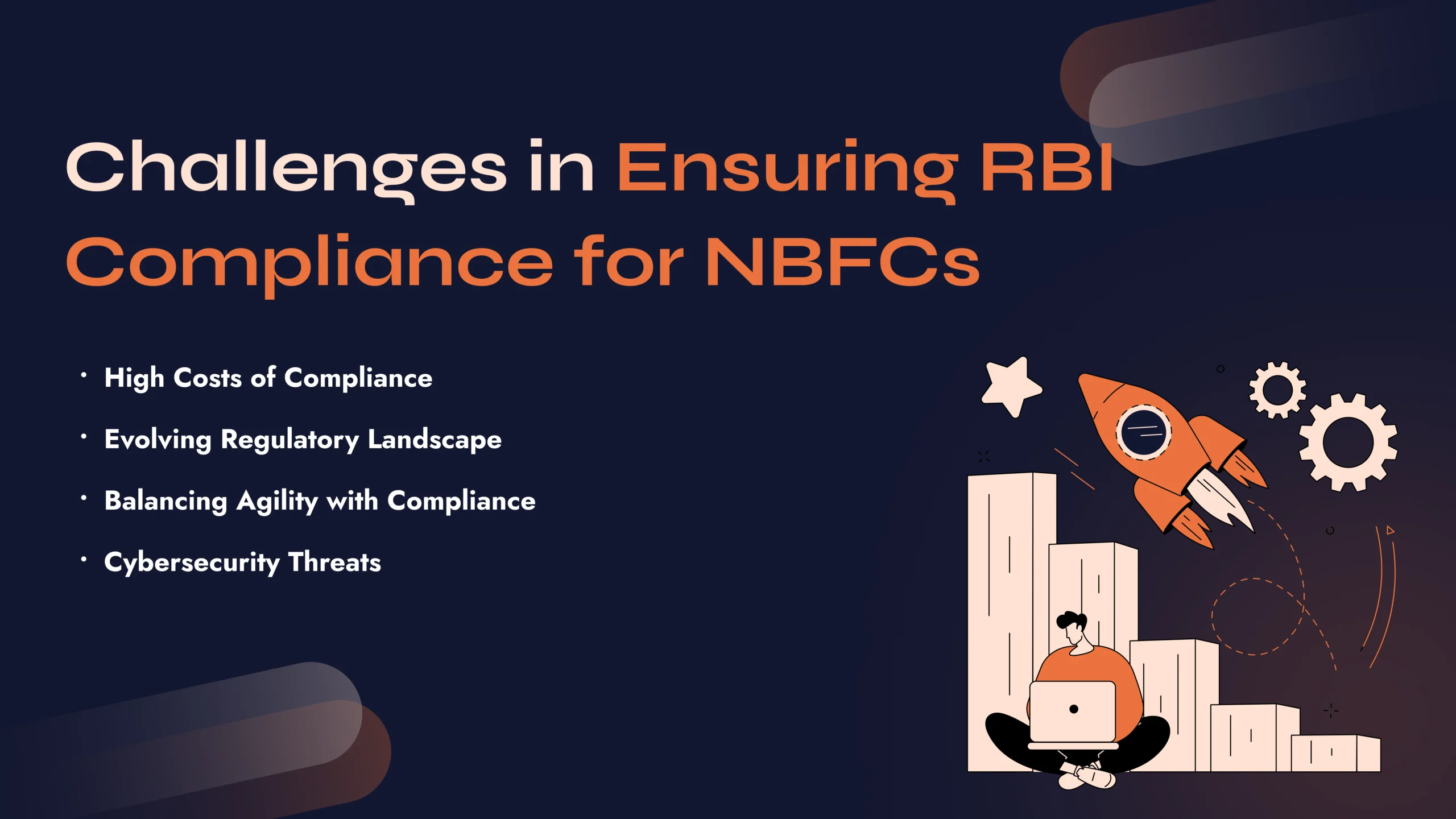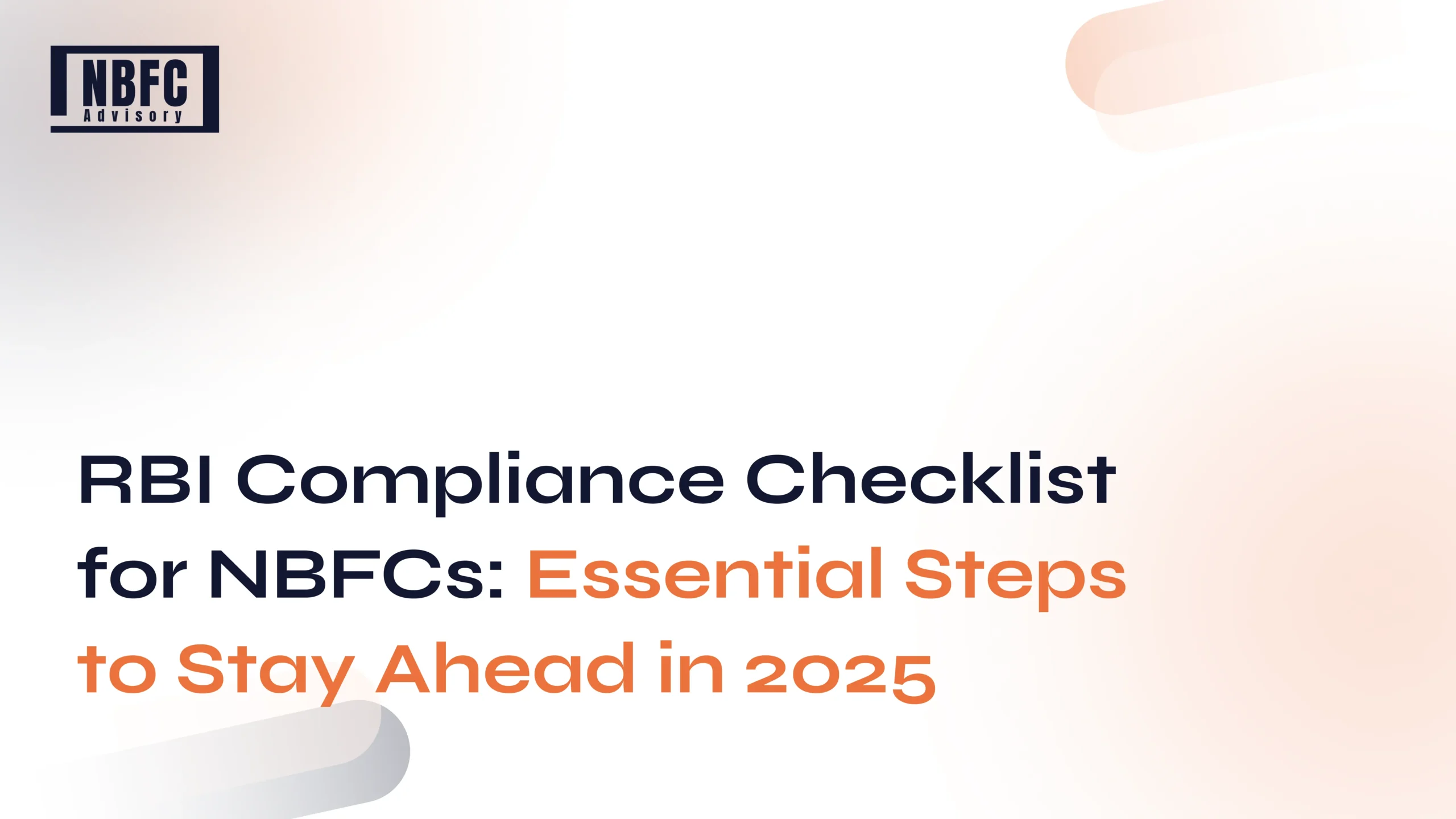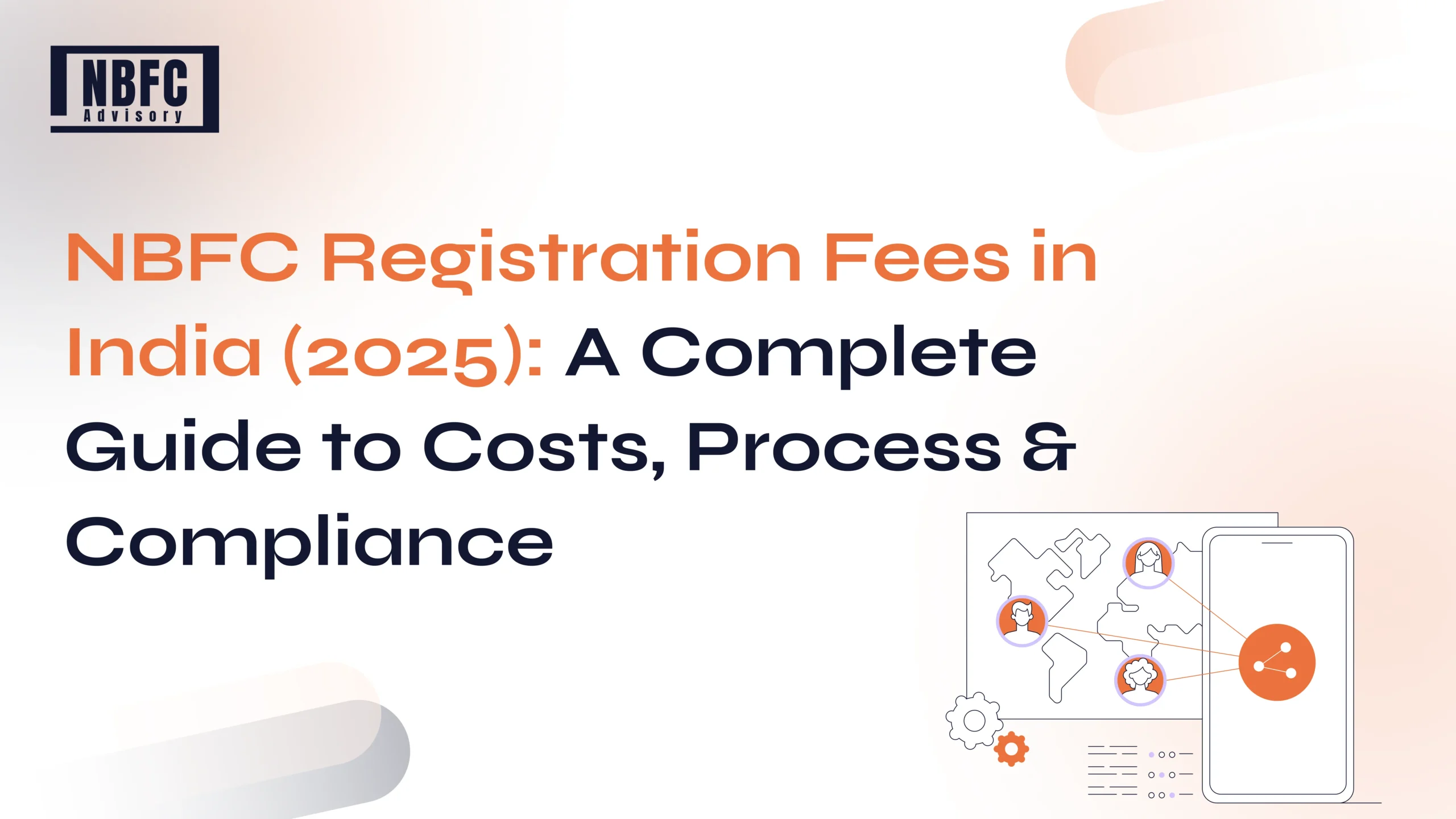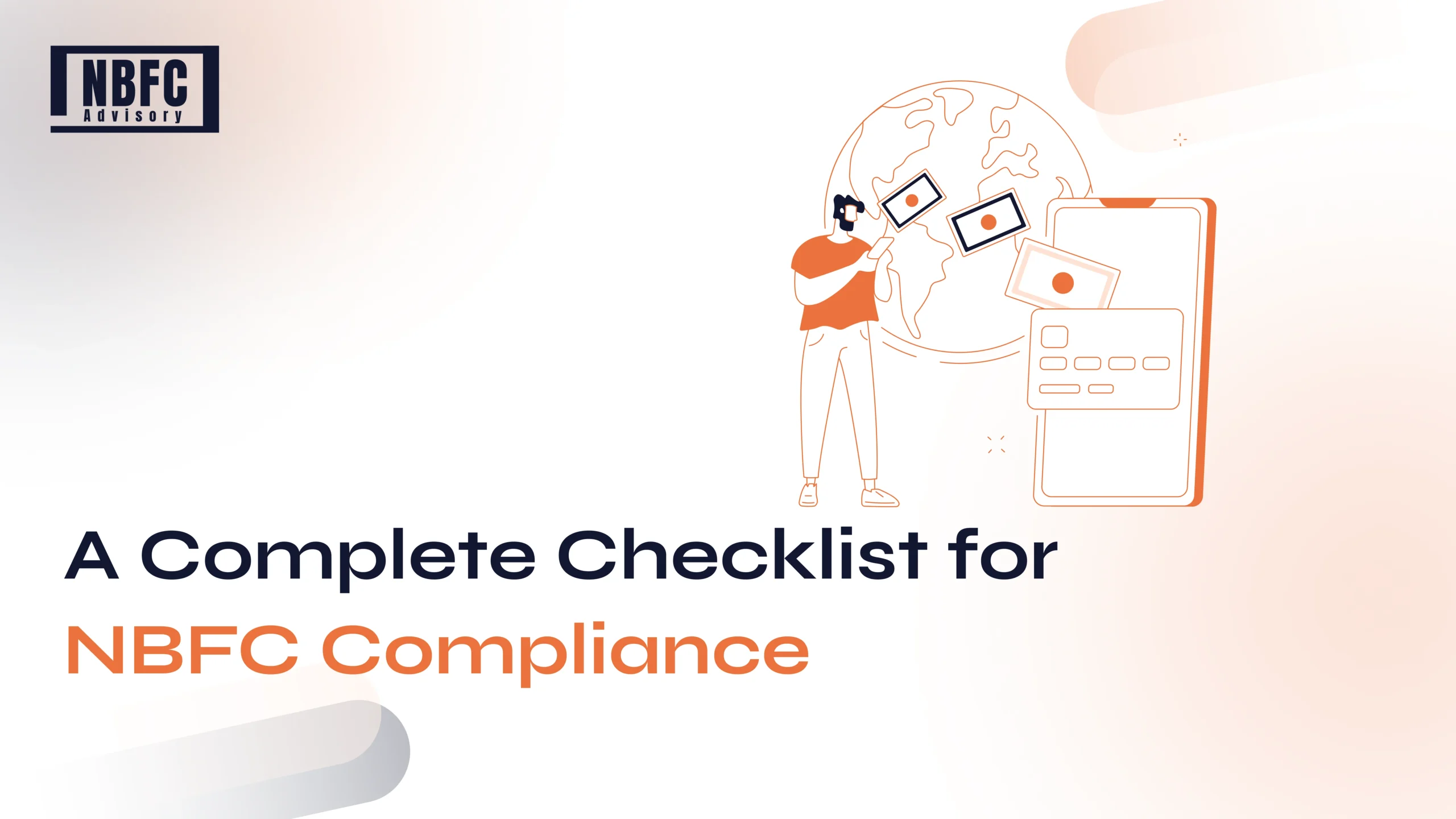In India’s evolving financial ecosystem, Non-Banking Financial Companies (NBFCs) play a critical role in bridging the credit gap. However, their growth and operations are intricately tied to stringent regulatory oversight by the Reserve Bank of India (RBI). Adhering to RBI compliance for NBFCs is not just a legal requirement but also a key determinant of operational sustainability and market trust.
In this Blog, we explore the RBI compliance checklist for NBFCs, the essential steps to stay ahead in 2025, and the challenges and opportunities that come with these regulations. We also discuss how balancing compliance with operational agility is vital for the sector’s growth.
Why RBI Compliance is Crucial for NBFCs
RBI compliance ensures that NBFCs operate within a framework that promotes financial stability, transparency, and protection for depositors and borrowers. Non-compliance can result in severe penalties, loss of public trust, and even license cancellation.
With the financial sector becoming increasingly digitized, the RBI has emphasized comprehensive governance for NBFCs, targeting areas like risk management, fraud prevention, and customer data protection. Staying compliant helps NBFCs:
- Avoid regulatory penalties.
- Gain investor and customer confidence.
- Align with international best practices.
- Enhance operational efficiency through structured policies.
Key Elements of the RBI Compliance Checklist for NBFCs in 2025
1. Adherence to Regulatory Frameworks
The RBI categorizes NBFCs into different segments, such as NBFC-Investment and Credit Companies (NBFC-ICC), NBFC-Micro Finance Institutions (NBFC-MFI), and NBFC-Factors. Each category has specific compliance requirements. For example:
- Capital Adequacy Norms: All NBFCs must maintain a minimum Capital to Risk (Weighted) Assets Ratio (CRAR) as prescribed by the RBI. The standard CRAR requirement is 15% for most NBFCs.
- Tier-I and Tier-II Capital: Tier-I capital must constitute at least 7.5% of the total capital.
2. Corporate Governance Standards
Good governance is central to NBFC compliance. In 2025, the RBI’s guidelines emphasize:
- Board Composition: Inclusion of independent directors and separation of ownership from management.
- Audit Committees: Regular audits and transparent reporting mechanisms.
- Fit and Proper Criteria: Due diligence on the directors and top management personnel.
3. Risk Management and Internal Controls
NBFCs must implement robust systems to manage risks. This includes:
- Credit Risk: Diversifying portfolios to mitigate defaults.
- Operational Risk: Ensuring fraud prevention mechanisms are in place.
- Technology Risk: Adopting advanced cybersecurity measures.
4. Asset Quality Monitoring
NBFCs are required to classify non-performing assets (NPAs) accurately and provision for them adequately. The RBI mandates NBFCs to:
- Monitor delinquency rates.
- Report quarterly NPA data.
- Maintain a transparent asset classification system.
5. KYC and AML Compliance
Adherence to Know Your Customer (KYC) and Anti-Money Laundering (AML) norms is non-negotiable. Key measures include:
- Implementing stringent customer identification processes.
- Regularly updating customer data.
- Monitoring and reporting suspicious transactions.
6. Digital Transformation and Data Protection
The RBI’s 2025 compliance framework focuses on digital banking and fintech collaborations. Key requirements are:
- Compliance with the RBI’s Digital Lending Guidelines.
- Data localization and protection in line with the Personal Data Protection Bill, 2019 (expected to be enforced by 2025).
- Regular IT audits to identify and mitigate risks.
7. Liquidity and Funding Norms
NBFCs must meet the Liquidity Coverage Ratio (LCR) requirements, which mandate maintaining high-quality liquid assets to cover net cash outflows over 30 days. This is essential to avoid liquidity mismatches.
Challenges in Ensuring RBI Compliance for NBFCs
While compliance is essential, it comes with challenges that require proactive management:

1. High Costs of Compliance
Smaller NBFCs often struggle with the financial burden of maintaining sophisticated compliance systems. This includes hiring specialized staff, upgrading IT infrastructure, and conducting regular audits.
2. Evolving Regulatory Landscape
The RBI frequently updates its guidelines to address emerging risks. Staying updated and aligning operations accordingly can be resource-intensive.
3. Balancing Agility with Compliance
NBFCs need to maintain operational flexibility while adhering to rigid regulatory norms. This can be particularly challenging for companies aiming to innovate in fintech-driven spaces.
4. Cybersecurity Threats
With increasing reliance on digital platforms, NBFCs are vulnerable to cyberattacks. Ensuring compliance with RBI’s data protection and cybersecurity norms requires significant investment in technology.
Strategies to Stay Ahead in 2025
To navigate these challenges and stay compliant, NBFCs can adopt the following strategies:
1. Invest in Compliance Technology
Automating compliance processes using RegTech solutions can significantly reduce costs and enhance accuracy. Solutions include real-time monitoring tools, automated KYC processes, and AI-driven risk assessments.
2. Strengthen Internal Training
Regular training for employees ensures that they are aware of the latest compliance requirements and their role in meeting them.
3. Collaborate with Experts
Engaging consultants and auditors with expertise in RBI regulations can help identify gaps and implement best practices effectively. For expert guidance and compliance-related services, connecting with specialized NBFC advisory services can be a game-changer. NBFC advisory firms offer tailored solutions to meet regulatory requirements, including risk management frameworks, digital compliance tools, and audit support.
4. Focus on Cybersecurity
Investing in robust cybersecurity frameworks and conducting periodic IT audits can mitigate risks and ensure compliance with digital governance norms.
The Way Forward: Balancing Compliance and Growth
While compliance is non-negotiable, NBFCs must also focus on innovation and customer-centric strategies to remain competitive. Key areas to focus on include:
- Customer Experience: Using technology to simplify lending processes while adhering to compliance norms.
- Partnerships: Collaborating with fintech companies to leverage digital solutions for compliance and customer acquisition.
- Sustainability: Integrating Environmental, Social, and Governance (ESG) considerations into operations.
Conclusion
RBI compliance for NBFCs is not merely about meeting regulatory requirements; it is a cornerstone of sustainable growth and financial stability. By following the compliance checklist, addressing challenges proactively, and leveraging technology, NBFCs can position themselves for success in 2025 and beyond.
The path to compliance may be demanding, but it is also an opportunity to build resilience, enhance credibility, and foster long-term growth. Staying ahead in this dynamic landscape requires NBFCs to embrace a forward-thinking approach, balancing regulatory adherence with innovation.
For more detailed guidance on RBI compliance norms, visit the Reserve Bank of India’s official website or consider consulting NBFC advisory services for customized compliance support and strategic solutions.




